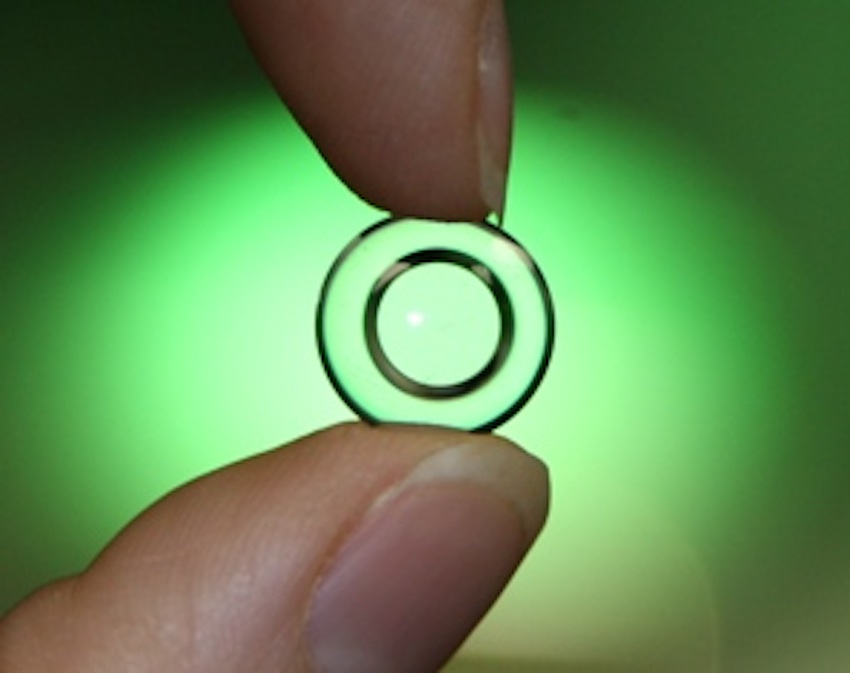Ortho-K Corrects Vision While You Sleep

An Ortho-K lens. Photo by GP Specialists of San Diego, provided
Imagine never having to wear your glasses or contacts in the light of day again. If you haven’t had 20/20 vision since grade school, that’s a big deal.
Now imagine a technology that could decrease the odds of developing ocular disorders like glaucoma, cataracts, and retina detachment. That’s an even bigger deal. And with something called orthokeratology, or Ortho-K, such a thing is possible.
“Ortho-K are lenses that you put on at night when you go to bed and you take off in the morning when you get up,” explains Dr. Curtis Frank, a Boston optometrist who is one of a handful of professionals in the area using the technology. “They [can] fix your vision, whether you be near-sighted, far-sighted, or have small amounts of astigmatism while you’re asleep, so that during your waking hours you don’t need vision correction.”
And while the convenience aspect of Ortho-K is certainly a plus—Frank says they’re great for athletes and people who don’t like glasses or contacts—the bigger picture is that Ortho-K can slow the progression of childrens’ near-sightedness, which can help prevent serious ocular diseases. And since 41 percent of Americans are near-sighted, that impact could be far-reaching. “The greatest benefit of Ortho-K lenses is the ability to slow the progression of near sightedness in kids,” Frank says. “Studies really show that after you get fairly near-sighted, there’s a much bigger risk for having a whole variety of eye problems. If you can slow the progression so you never get to that point, I think it’s a good thing.”
Similar to a traditional contact but slightly larger, Ortho-K subtly changes the eye to improve vision. “It flattens your eye, much like Lasik flattens your eye,” says Frank. “It gently reshapes your eye while you sleep so that your cornea kind of molds to the shape of the lens, so that when you remove the lens, you have a mold of your cornea to fix your prescription.”
The technology has been FDA-approved for 10 years, but Frank says it has recently undergone major improvements in effectiveness and efficiency. “As we’ve been able to be better at measuring the shape of the cornea with new technology and we’ve got lasers that do a little bit more, we can get a much quicker effect,” he says. “The new materials let in a lot of oxygen, almost equivalent to not having a lens in your eye. We’re getting both safer, more reproduceable, better measured, and, because the designs are better, quicker acting lenses than we’ve ever had.”
All told, Frank says the lenses can start to take effect in as little as minutes, and most people experience fully corrected daytime vision in one to seven days. “It’s not a way to permanently fix your prescription, it’s a way to reshape your cornea so that you can correct your vision, almost like a retainer,” explains Frank.
Though Ortho-K can be immensely helpful, cost and maintenance are two of the potential downsides, Frank says. The lenses must be put into a cleaning solution every morning and replaced about once a year, which Frank says requires some parental supervision. On top of that, the original fitting and testing runs a customer about $1,500, and after the first year the cost is still as high as $600.
Nonetheless, Frank says the proof is in the results. “I think it’s particularly good for kids that are ages 7 to 20 who are getting more near-sighted every year,” he says. “It definitely slows the rate of change. I have kids who have been wearing them five, six years and they haven’t [gotten more near-sighted] at all.”


